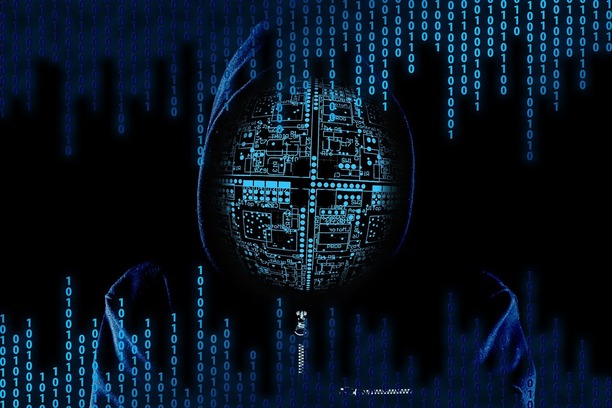The importance of cybercrime, particularly through the Internet, has increased as computers have become indispensable to various sectors, such as government, entertainment, commerce, etc., which are made punishable by the Information Technology Act, 2000, or subject to penal liability under the Bharatiya Nyaya Sanhita, 2023. Cybercrime is the use of a computer to carry out unlawful activities, including identity theft, fraud, trafficking in child pornography, intellectual property violations, privacy violations, etc. The term ‘cybercrime’ has not been defined in any law passed by the Indian Legislature. Jaishankar and Halder, define cybercrime as “offenses that are committed against individuals or groups of individuals with a criminal motive to intentionally harm the reputation of the victim or cause physical or mental harm to the victim directly or indirectly, using modern telecommunication networks such as the Internet (chat rooms, emails, notice boards, or groups) and mobile phones (SMS/MMS).” Article 2 of the Council of Europe Convention on Cybercrime (Budapest Convention) defines illegal access as Each Party shall adopt such legislative and other measures as may be necessary to establish as criminal offences under its domestic law, when committed intentionally, the access to the whole or any part of a computer system without right. A Party may require that the offence be committed by infringing security measures, with the intent of obtaining computer data or other dishonest intent, or in relation to a computer system that is connected to another computer system. Youth are vulnerable due to their online presence, lack of digital literacy, and susceptibility to manipulation. This vulnerability can lead to severe consequences, including online harassment, identity theft, and cyber stalking, affecting their mental health, well-being, and future prospects.
Despite its benefits, the internet poses a significant threat to young people, exposing them to cybercrime. Presently, India has the second-highest number of internet users in the world, with 954.40 million active internet users (as of 31st March 2024) accessing the internet at least once a month. Notably, the COVID-19 pandemic increased the number of internet users in India by 47 million. The McKinsey Global Institute Digital India report also points out that India is one of the world’s largest and fastest-growing digital consumer marketplaces, with the public and private sectors driving the expansion, and the rapid development and acceptance of technology will continue to profoundly shape various aspects of users’ lives. Youth are vulnerable due to their online presence, lack of digital literacy, and susceptibility to manipulation. This vulnerability can lead to severe consequences, including online harassment, identity theft, and cyberstalking, affecting their mental health, well-being, and future prospects. Cybercrimes include identity theft, cyberbullying, phishing, sextortion, online predation, ransomware attacks, e-commerce fraud, dark web activities, cyber terrorism, piracy, etc.
Youth as victim
In today’s digital era, as technology continues to advance and societies become increasingly interconnected and reliant on the internet and social media, the vulnerability of young individuals to cybercrime has emerged as a significant concern. India in particular has been witnessing a steep rise in cybercrime cases, with a total of 65,893 cybercrime cases reported in different states of India in the year 2021 (NCRB Crime Report, 2022) and more than 27 million Indian adults facing cyber theft in the same year. Many young people’s lives are shaped by the virtual world they encounter through online gaming, communities, and networking. This is particularly true in technologically advanced nations where the trends in global usage are determined. Over the past few years, there has been a drastic increase in the number of crimes involving information and technology. According to the data published by THE GLOBAL SECURITY FORUM (GSF), 72% of children around the world have experienced at least one type of cyber threat online. The younger generation will certainly be impacted by cybercrime. Today’s youth were born and brought up in the age of modern technology and find it impossible to live in an offline world with no access to social networking sites and the internet. Many young people lack basic knowledge before using social media and other online platforms. This act of neglect has led to a rise in cybercrime among youth. Malicious cyber activity poses a danger to public safety, national security, and economic stability. The global cyber threat continues to evolve at a rapid pace, with a rising number of people falling victim on a daily basis. The development of technology creates opportunities for people, such as business and leisure activities, but also enables criminals to commit crimes. Hacking, phishing, cryptojacking, insider threats, password attacks, man-in-the-middle attacks, and business email compromise (BEC) malware attacks are the most common types of cyberattacks. Criminals who work online can use a lot of different psychological tricks to trick people. For example, phishing emails are the most common method by which hackers distribute ransomware. Hackers use fake emails to trick victims into opening dangerous attachments or clicking on dangerous links. Cybercriminals also exploit the natural desires of humans to trust others by sending unsolicited electronic mails to unsuspecting victims, as if they originated from legitimate sources.
In the case of State of Tamil Nadu v. Suhas Katti[i], a young man, Suhas Katti, was convicted for posting obscene messages about a divorced woman on a Yahoo message group. The messages were defamatory and annoying, leading to the woman receiving harassing phone calls. The accused was subjected to the rigorous imprisonment of 2 years along with a fine of Rs. 500 under Section 469 of the IPC, simple imprisonment of 1 year along with a fine of Rs. 500 under Section 509 of the IPC, and rigorous imprisonment of 2 years along with a fine of Rs. 4,000 under Section 67 of the IT Act.
Youth as perpetrator
We often associate cybercriminals with the pursuit of financial gains, but for many young individuals taking their first steps into the world of cybercrimes, money is not always the primary motivation. Their reasons for crossing over to the “dark side” often stem from other factors, such as curiosity, thrill-seeking, or a desire for recognition, rather than purely financial incentives.
Young people are naturally more adept and familiar with technology, giving them an advantage when learning and implementing cybercrime techniques. Their familiarity with digital tools, combined with easy access to online tutorials, hacking forums, and open-source software, enables them to quickly learn the skills required for activities such as hacking, phishing, or malware distribution. Furthermore, the curiosity and desire to experiment frequently drive them to push the boundaries of technology, occasionally crossing into illegal territory without fully understanding the consequences. This combination of technical proficiency, accessibility, and a sense of invincibility can render young people both skilled and vulnerable participants in the world of cybercrime. As defined by the US Department of Justice, cybercrime broadly encompasses three categories of offenses:
- Crimes in which the computer or computer network is the target of the criminal activity (for example, hacking, malware and Distributed Denial-of-Service (DDoS) attacks)
- Existing offences where the computer is a tool used to commit the crime (for example, child pornography, harassment, cyber-fraud, criminal copyright violations, etc.)
- Crimes in which the use of the computer is an incidental aspect of the commission of the crime but may afford evidence of it (for example, SMS messages relating to a crime).
Preventive Strategies
Cybercrimes are often viewed as technical offenses that require technical solutions, such as antivirus programs or automated intrusion detection tools. However, these crimes are committed by individuals or networks of people that prey upon human victims and are detected and prosecuted by criminal justice personnel. As a result, human decision-making plays an important role in the progression of an offense, the justice response, and policymakers’ attempts to legislate against these crimes.
The following are the preventive measures taken by the Government of India:
- The Information and Technology Act, 2000
The Information Technology Act of 2000 is India’s first landmark cybersecurity law. Enacted by Parliament and administered by CERT-In, it guides cybersecurity legislation, institutes data protection policies, and governs cybercrime. The Act protects various sectors, including e-governance, e-banking, and e-commerce. The IT Act provides a crucial framework for promoting cybersecurity standards and protecting critical information infrastructure in India.
2. National Cyber Security Policy, 2013
The Department of Electronics and Information Technology released the National Cyber Security Policy 2013 as a security framework for the public and private organizations to protect and equip themselves against the evils of cyber-attacks.
3. IT Rules, 2021
On February 25, 2021, the Ministry of Electronics and Information Technology introduced the IT Rules, 2021, replacing the previous IT Rules of 2011. It released updated draft amendments to strengthen the IT Act in response to the evolving digital landscape. It empowers users of digital platforms by enabling them to seek redressal and grievances and hold platforms accountable for violations of their rights.
4. KYC (Know Your Customer)
It is a globally practiced standard enforced by the Reserve Bank of India (RBI). It involves monitoring and verifying customer data to enhance security, prevent fraud, and safeguard payment credentials from theft.
The strategies that can be taken at the individual level are as follows:
- Digital literacy
Digital literacy refers to the ability to use digital technologies, critically evaluate online information, and safely navigate the internet. It empowers the individual to understand the nuances of the online environment.
2. Parental Monitoring
They are software tools that allow the parents to supervise and limit what their children see and do online, ensuring a safe online environment.
3. Awareness Programmes
These programs aim to inform individuals about different cyber threats and equip them with knowledge to stay secure in the digital space. Their goal is the reduction of the risk of cyberattacks through awareness and encouraging good cyber hygiene practices.
Conclusion
The rise of cybercrime has become a pressing concern in today’s digital age, particularly among the youth. As technology continues to advance and the internet becomes increasingly intertwined with our daily lives, the vulnerability of young individuals to cybercrime has emerged as a significant threat. We must acknowledge the severity of this issue and take proactive measures to prevent and combat cybercrime. The Government of India has taken steps to address this issue, such as the enactment of the Information and Technology Act, 2000, and the Information and Technology Rules, 2021. However, it is essential to go beyond legislative measures and focus on educating and empowering individuals, which can significantly reduce the risk of cybercrime. Ultimately, combating requires a collaborative effort from the government, civil society, and individuals. Working together can create a safer and more secure digital environment for everyone. It is time for us to take cybercrime seriously and take proactive measures to prevent and combat it. The future of our digital world depends on it.
Endnotes
[i] C.C No. 4680 of 2004


Leave a Reply